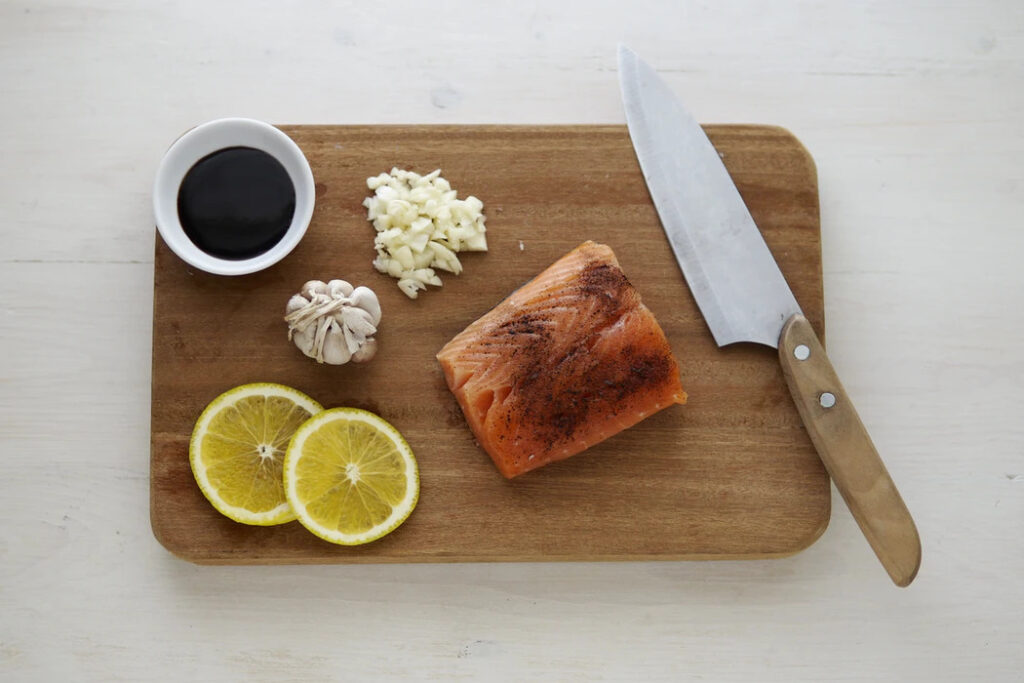Ketogenic diets are all the rage, mainly because they are very low on carbs. When you are on a keto diet, about 5% or even less of your energy intake will come from carbohydrates, which will put your body into a metabolic state called ketosis. Once your body reaches that state, your cells will use the ketone bodies to generate energy. If you’re familiar with this diet, then you probably already know how confusing it can be to follow it. To clear some of that confusion, we have created this guide to walk you through what you can and can’t eat while on a keto diet.
What You Should Eat
Fish and Seafood
Fish is an optimal choice for anyone who wants to start a keto diet. It is rich in B vitamins, selenium, and potassium. In addition to that, it is protein-rich and carb-free. You can eat any type of fish ( like salmon, mackerel, albacore tuna, sardines) at your own behest because they all contain healthy amounts of omega-3 fats, which can lower blood sugar levels and increase your insulin sensitivity. Frequent fish intake is known to improve your mental health and reduce the risk of chronic diseases. To integrate fish and seafood into your keto diet, make sure that you consume 3-ounce of fatty fish every week.
Milk and Low-Fat Dairy Products
Full-fat dairy products, such as cheese, sour cream, heavy cream, and Greek yogurt are great choices, but be sure to avoid milk as well as low- and reduced-fat products, as they contain more carbs and sugar. The people at ForKetoLife.com recommend that you calculate the amount of lactose in your cheese, as some types of cheese, like mozzarella, have more lactose than aged cheeses like parmesan, romano, and cheddar cheese. Keep in mind that low-fat and non-fat dairy products are higher in carbs. Pasteurized milk, while low in carbs, can be hard to digest. You can opt for raw milk instead, but be sure to only consume it in small amounts – no more than one serving per day.
Low-Carb Veggies
Non-starchy vegetables are low in calories and carbs. They are also high on many valuable nutrients like vitamin C, minerals, as well as antioxidants. That’s why you should go for non-starchy vegetables when you’re on a keto diet, but you must calculate your net carb intake. For example, your net carbs must be a total of 8g. Net carbs are the total carbohydrates you consume without fiber. To integrate low-carb veggies into your diet, you might try green beans, bell peppers, broccoli, spinach, and zucchini. A simple rule to know whether or not the vegetables you’re consuming are keto-friendly is by categorizing them into two groups: above-ground vegetables, which are the best keto options, and below-ground vegetables, which contain more carbs.
What You Shouldn’t Eat
Starchy Vegetables
As we mentioned earlier, starchy vegetables contain more digestible carbohydrates and fiber, which doesn’t make it keto-friendly. Starchy vegetables like potatoes, corn, sweet potatoes, and beets must be avoided while you’re on a keto diet. One cup of corn translates to 32 grams of net carbs and 36 grams of total carbs. One medium-sized sweet potato may have 33g net carbs and 37 grams of total carbs. This means that you can’t consume these vegetables even in moderation or in smaller quantities, as they will ultimately break the single most important rule of any keto diet, which is basically to avoid carbohydrates.
Grains
As you may already know, rice, crackers, cereal, bread, and beer are all high on carbohydrates, so they’re not keto-friendly under any circumstances. Some people would work around this by consuming a lighter, low-carb version of these foods. For example, drinking light beer on occasion isn’t going to break the strict rules of the keto diet. You can also use other alternatives like spiralized vegetables or shirataki noodles.
Most Types of Fruits
Fruits are generally healthy, but they are, unfortunately, not keto-compliant. Because they are high in sugar and carbs, fruits must not be included in your keto diet. This means that you shouldn’t consume any tropical fruits, dried fruits, fruit juices, and fruit smoothies. Instead, make sure that you consume lower-sugar options, like strawberries, raspberries, or blackberries, but be sure to eat them sparingly.
It can be difficult to determine which types of food are keto-friendly and which ones aren’t. There is no one-size-fits-all meal plan when it comes to keto diets, so you must work with a dietitian to ensure that you’re getting the nutrients you need from your diet. You should also calculate your calorie intake every day in order to have an idea of how much energy your body generates out of the carbs you consume.

